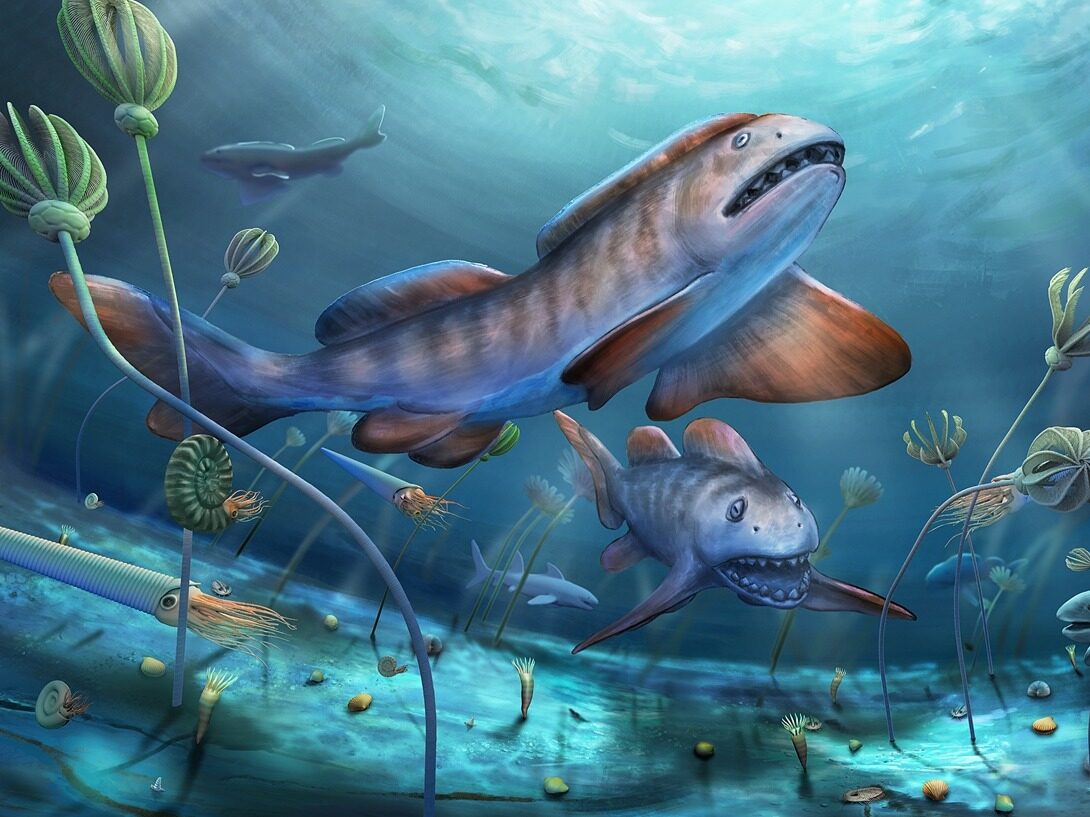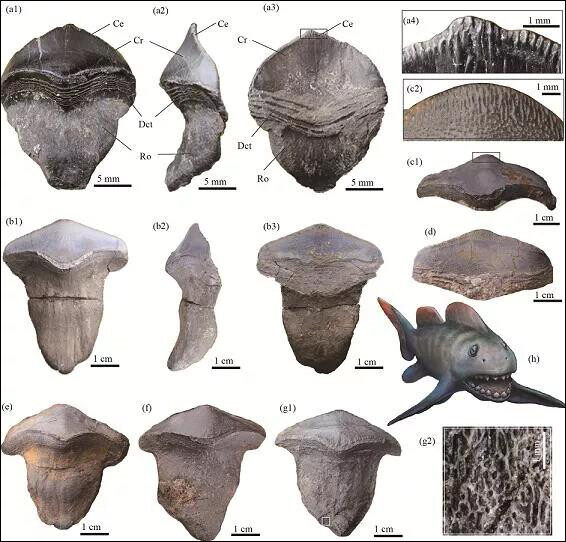- The discovery of the tooth shark refreshed its fossil distribution record in the world

Recently, the Institute of Paleospine of the Chinese Academy of Sciences discovered the prehistoric giant shark 290 million years ago in the Yangquan area of Shanxi for the first time. This study has enriched the understanding of the biodiversity of the Permian Uralian in North China, greatly expanded the paleogeographic distribution range of the valvulartooth shark in the northern hemisphere, and provided important information for the migration of the valvulartooth shark across the Paleo-Tethys Ocean. Fossil evidence indicates that it already has the ability to migrate across the ocean, further supporting that the valvulartooth shark may be a top predator with strong swimming ability, rather than the benthic shellfish originally thought.
Phalodendron is a very mysterious group under the Euchondrhagia, and currently only 17 genera and species have been described. In the 1950s, Mr. Yang Zhongjian, the founder of Chinese paleontological vertebrates, discovered China's earliest fossil squash, and named it the Xingguo squash. However, this specimen was re-examined in 1978 and was reclassified to the middle and mandibular teeth of another large genus of the valvulartodon shark.
The seven fossil tooth sharks found in the Yangquan Qian limestone have been compared and determined to be the Ohio tooth shark in the genus Pelodon of the Pelodonidae, which is a true member of the genus Pelodon. This discovery refreshed the world's fossil distribution record of the genus Pterocephalus, revealing that Pelodontic shark may be a type of pelagic fish that is good at swimming and spreading. It is also useful for studying and analyzing the Permian marine biodiversity in North China. It is of great significance to indicate the ancient environment.

According to reports, the flaptooth shark belongs to the cartilaginous fish in the jaws, but it cannot be attributed to any of the two branches of the extant cartilaginous fish. They belong to the more primitive cartilaginous fishes-true cartilaginous fishes, which mainly lived in the Carboniferous to Permian periods. Since most of the bodies of cartilaginous fishes are difficult to preserve, all the fossils of the tooth sharks found so far are scattered teeth. In terms of the size of their teeth, their teeth are similar to those of living great white sharks. It can be inferred that the valvulartooth shark is a prehistoric giant shark with a body length of up to three to five meters. The traditional view is that they are bottom-dwelling, slow-moving shell-eating fish that feed on benthic brachiopods, bivalves and other crustaceans. But judging from the existing tooth fossils, the unique shape of the teeth of the valvular tooth shark indicates that it may be another way of life: the edge of the blade-shaped tooth is covered with a large number of vertical grooves, and it also has a huge Occlusal surface, this tooth form may be more suitable for biting the muscle tissue of the prey.
This study shows that the horizontal imbricated ridge strips surrounding the base of the crown of the valvular tooth shark may have the function of preventing the escape of prey by increasing friction when the tooth pierces the muscle and soft tissue. Therefore, the niche of the toothed shark may be similar to that of the modern great white shark, and it was the top predator in the Paleozoic ocean. The discovery of the valvulartooth shark in China and Japan outside Europe and the United States indicates that it has the ability to migrate across oceans and supports that the valvulartooth shark is likely to be a type of predator with strong swimming ability. Editor/He Yuting
Comment
 Praise
Praise
 Collect
Collect
 Comment
Comment
 Search
Search














Write something~